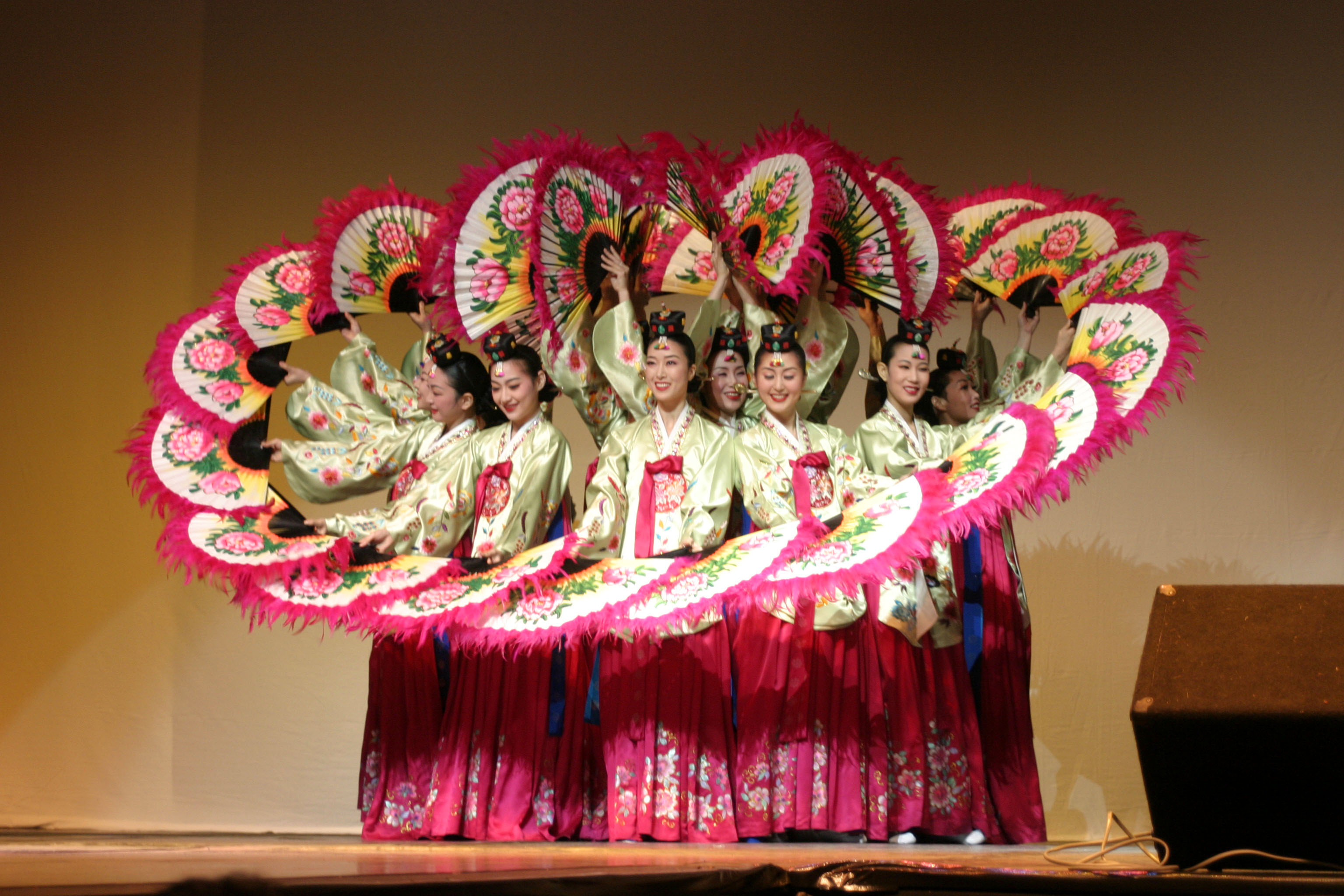Evidence of music in Korea dates back nearly a thousand
years. A historical text dating around 1145AD mentioned two different stringed
instruments. And like many cultures, their traditional music was generally
divided between court music (also known as Jeongak, "orthodox music")
and the people's music (or, Minsokak). The court music was for the people at
the top: government officials, top generals of the military, other important
and/or wealthy people and performed at banquets, official functions, or
military processions. Whereas, the people's music was for the merchants, people
who made things, and farmers -- the regular people. This is also the category that
included folk songs (minyo). One of the most famous folk songs for both North
and South Korea is called "Arirang." Pansori is a type of
storytelling, performed by a soloist accompanied by a drummer; this art was
recognized as one of the UNESCO's Intangible Heritage of Humanity back in 2003.
When the Japanese took control over Korea during the early part of the 20th
century, they did not really impose their own music (called gagaku in
Japanese). However, they pushed for more European classical art music, which
was a favorite of both the Japanese and Korean elite class. Although Kugak
(Korean traditional music) was not particularly pushed or encouraged as a
cultural art form, it wasn't necessarily discouraged either. Instead of dying
off, it merely merged with Western music styles and adapted itself to it. Music
did remain fairly divided between Western-style for the elites and traditional
for the common class.
Dance has been a part of Korean culture since its earliest
times. Although people from all walks of life participated in traditional
dancing, there are a few dances that were designated as holding a higher status
and generally performed in the courts. These include the famous Fan Dance (“Buchae
Chum”), Entertainer Dance (“Oudong”), Monk Dance (“Seung Mu”), the Ghost Dance,
and the Hermit Dance. Traditional dance fell to the wayside a bit during the
Japanese occupation when they suppressed many parts of Korean culture. However,
cultural dances have made a comeback in popularity and appreciation.
_(cropped).jpg) |
| BTS |
I found quite a few bands to listen through this past week.
To my 13-year-old daughter’s delight, there were quite a few K-pop bands in my
list. K-pop has somehow become quite popular among American teenagers. I think
it has more of an American appeal with its borrowings from hip-hop and EDM in
comparison to J-pop from Japan. I think there are many of these bands that
sound kind of similar (like how I thought of all the boy band of the 1990s) –
and for some reason (probably marketing), they like to capitalize their band
names. BTS is probably the most internationally well known band, but I also listened
to SUPER JUNIOR, SHINee, INFINITE, TWICE, EXO, BIGBANG, and TVXG!.
 |
| The Geeks |
I listened to a few
rock bands as well. I found some that range from kind of alt/hard rock like
Sinawe to more punk bands like Crying Nut, No Brain, and The Geeks. The Geeks
seem to be more hardcore punk and sometimes remind me of Guitar Wolf or Misfits
at times. I anticipate listening to more of them this week.
 |
| Rain |
I also found a
couple of Korean hip-hop artists. The first one I listened to was Seotaiji and Boys,
which reminds me a little of a Korean version of Cypress Hill in one song, but
other songs seem to borrow from some old school punk. I kind of like them. The
other one I listened to was Rain. His style leans more toward R&B, but he
also made it internationally as well. I remember hearing his name pop up about
ten years ago or so. It’s pretty catchy stuff.
Up next: the food
_(cropped).jpg)
_(cropped).jpg)



No comments:
Post a Comment